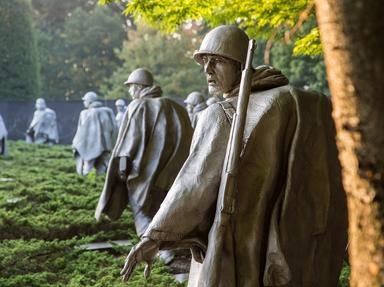Quiz Answer Key and Fun Facts
1. Perimeter where UN forces made their last stand
2. UN amphibious operation to relieve pressure
3. Reservoir where US Marines were surrounded by Chinese units
4. First battle between US and Chinese forces marking China's entry into the conflict
5. One of the final battles of the war fought during peace talks in 1953
6. Decisive battle in 1951 to control the high ground just north of the DMZ UN victory
7. Site of four major battles
8. UN offensive to regain observation posts in the Taebaek Mountain range in 1951
9. One of the final battles in the Hook before the armistice
10. Australian and Canadian effort to stop Chinese attack on Seoul
Source: Author
JCSon
This quiz was reviewed by FunTrivia editor
ponycargirl before going online.
Any errors found in FunTrivia content are routinely corrected through our feedback system.
